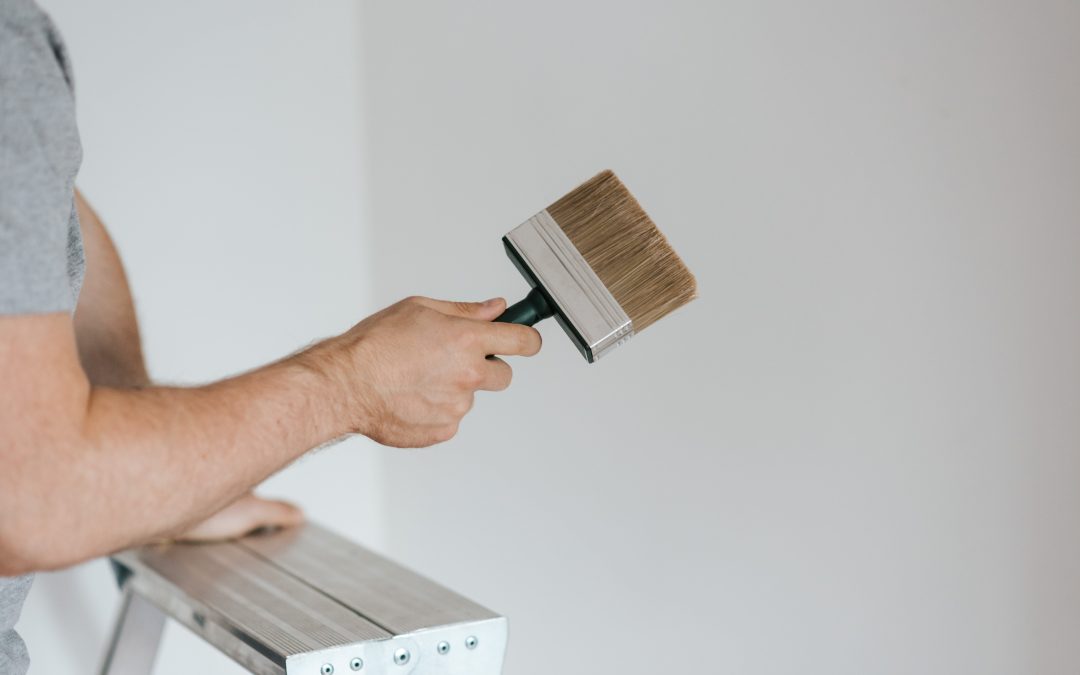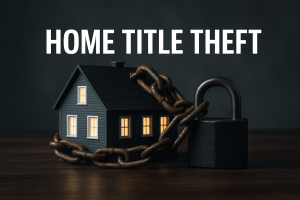Home ownership can be great, but it also involves a more complex level of budgeting and planning.
One method is to use the general guideline of reserving 1-4% of your home’s value per year for home maintenance, repairs and improvements. Another method is to schedule out your expected costs based on the age and life expectancy of the specific components of your home. Using both methods will give you a better picture of what your costs will be.
Introduction
When you rent, your monthly rent costs are routine and predictable because your landlord has that responsibility. As a homeowner, that responsibility falls on you. In other words, your costs are not just your monthly mortgage loan payment and related insurance and property taxes, but also home maintenance costs.
The purpose of this article is to walk through the process of estimating and saving for home maintenance and repair costs. This is different than an emergency fund.
We are using the term “maintenance” generically. We are referring to not only routine maintenance such as the annual servicing of your mechanical equipment (furnace, air conditioner, lawn mover, snow blower, etc), but also the non-routine replacement and repair costs of that equipment and the home itself (roof, siding, landscaping, windows).
Let’s get into the definitions in more detail so we are all on the same page.
Home Emergency vs Maintenance Costs
Here are my definitions from a financial perspective as it relates to home ownership.
Home Emergency = An unlikely event related to the home with potentially significant financial costs. These costs are not predictable and are often covered at least partially by homeowners insurance.
Home Maintenance, repair & replacement costs = Both the routine and non-routine costs of keeping your home in good condition. This includes the mechanical equipment as well as the home structure itself.
An example of an Emergency would a burst pipe that floods water in an area of your home, which results in water damage in excess of the cost to repair the pipe.
An example of maintenance costs would be the routine tune-up of your furnace and air conditioning systems each year to keep them in good working order. It would also include the non-routine cost of repairing or replacing the furnace and air conditioning systems when necessary.
Often times, many of the costs related to an “Emergency” would be covered by your home insurance, less any deductible you would be responsible for. That is why it is important to understand what is, and what is not, covered by your homeowners insurance.
Maintenance costs as defined above are not covered by homeowners insurance. These are some of the costs of owning a home.
Emergency Fund
You have likely heard that financial planners and coaches advise that you maintain an emergency fund equal to 3 to 6 months of your typical living expenses. That is good advice. This is primarily to cover you during a significant event, such as a loss of income due to a job layoff. This fund is also for other emergencies too, such as the burst water pipe example above or other unexpected expenses such as medical bills or car repairs.
The purpose of the Emergency fund is to handle the financial shock of an unlikely event, so that you eliminate both the emotional and financial stress of coming up with the money, as well as the additional costs of borrowing money, such as interest expense.
So, what we are saying is that an emergency fund would cover home emergencies as we explained above, but that is separate from budgeting and planning for home maintenance, repair and replacement costs.
Home maintenance, repair and replacement costs might feel like an emergency at the time (ie: your furnace just died), but if you think about it, these things are inevitable (a burst water pipe or a fire is not).
All mechanical and physical items break down over time, and eventually need to be replaced. It’s not a matter of if, but when. These things are harder to predict an exact date, but you can do some things to estimate the amount and timing of these costs.
| Category | Maintenance, repairs & Replacements | Emergencies |
|---|---|---|
| Likely event | Yes | No |
| Fund to use | Home Maintenance Fund | Emergency Fund |
| Example | Replace end of life furnace | Storm damage |
Home maintenance, repairs & replacements
Let’s get into the details of budgeting and saving for home maintenance, repair and replacement costs.
First, there are some reasonable rules of thumb that should help provide some guidance. Second, there is a more detailed process you can go through that should result in a similar answer, but provides more timing clarity.
Rule of Thumb
As a good rule of thumb, you should expect to spend approximately 1% to 4% of the value of your home annually to cover the maintenance costs we defined above. This is often difficult for us to visualize, because the big costs are non-routine. Some of these non-routine costs could occur every 10, 20, 30 years or more. That’s what I meant when I said at the beginning of this article that home ownership requires a more complex level of budgeting and planning.
So, for example, if your house has a fair market value of $300,000, you should expect to spend $3,000 to $12,000 per year on average over the long term (1% to 4%) on home maintenance, repair and replacement costs. In this example, let’s take the middle of the range for now, which is $7,500 per year, or 2.5% of the home’s value. That calculates out to be $625 per month ($7,500 per year / 12 months = $625 per month), which is no small sum!
Unfortunately, that is the reality of owning a home, which is often overlooked by homeowners. These expenses are often what people call emergencies when they happen, but in reality they are not emergencies, but bigger ticket repairs or replacements that are just part of owning real estate.
You could go five years, for example, with relatively low maintenance and repair costs. Then, all of a sudden, for two years in a row, you could incur substantial costs such as needing a new roof one year and a new furnace the next. It all typically amounts to an average cost of 1% to 4% of your home’s value per year over many years, it’s just that the sequence of events is not consistent.
Rule of thumb (another viewpoint)
If you were renting, that monthly amount divided by the number of rental units in the apartment would be baked into your rent payment, you just don’t see it. The landlord needs to recover all the repair, maintenance and replacement costs of the apartment complex in order to make a profit. Real estate investors also need to do the math to break it down to a monthly sum. If they get it wrong, especially if underestimated, it will take a big bite out of their cash flow.
The same applies to you and your home!
Let’s invert the math and look at it another way. If you were running a business and renting out a home, the depreciable life of residential real estate would likely fall in the 39 year category. If you used straight line depreciation, you would depreciate 1/39th of the real estate purchase price per year, or 2.56% (say 2.5%). In other words, if your home physically depreciates 2.5% per year, you need to replace that cost with maintenance, repairs and replacements in order to maintain the integrity of your home.
You can, of course, delay making repairs or improvements in the short run to preserve cash. However, you will have to spend more in future years to get caught up. There is no free lunch here.
There is a general guideline in industrial business as well. Spend at least as much on capital improvements as you have in depreciation expense each year in order to keep your facilities and equipment in good working order.
Step-by-step guide for detailed planning purposes
As mentioned above, one rule of thumb is 1% to 4% of a home’s value per year for home maintenance, repair and replacement costs.
Another step-by-step detailed method would be to list out all of the mechanical equipment related to your home, and the other typical home repairs and replacements that would be necessary (roof, siding, etc). Then, based on the approximate age of each of the items, their typical useful life, and estimated cost to replace, you can create a more realistic schedule of the likely future costs. This may help provide more clarity as to your expected costs in the future. It will also be another way to help validate the 1% to 4% rule of thumb.
Example of a home maintenance budget
An example is shown below. This is an abbreviated list to display the concept. Essentially you are planning out the next 10 years (or more) of expected spending. Of course this is just an estimate, but it sure provides much better clarity than just winging it!.

You can improve the accuracy by layering in a inflation rate so that you have a better handle on the future cost of each item. However, that is secondary to actually putting together a schedule as shown here. I have left the inflation impact out to keep the example straightforward. This worksheet is in today’s dollars.
In this example, the average annual cost is approximately 2.0% of the home’s fair market value looking at a 10 year period.
Reviewing the detailed schedule
You can see in years 1 -5, you will likely have to replace your water heater, your furnace and air conditioning systems. In years 6 – 10, you’ll have some significant costs expected to replace the roof and flooring. If you plan ahead for these costs, they won’t seem like “emergencies” when they occur.
The estimated cost for the 10 year period is $60,000, or $500 per month ($60,000 / 120 months). We also put $5,000 in a category called “cushion.” This is to help cover unexpected repairs or underestimates on replacement costs.
Of course when you put your spreadsheet together you would list every piece of mechanical equipment related to the home, as well as other home replacements and improvements. This would likely include many of the following:
- All appliances (stove, microwave, dishwasher, refrigerator, washer, dryer, etc)
- Home mechanicals (furnace, air conditioners, water heater, dehumidifier, sump pumps, septic pumps, well pump, water filtration systems, garage door opener, garage door springs, etc)
- Home and lawn care equipment (lawn mower, snow blower, etc)
- Home repairs & replacements (Roof, siding, flooring, windows, driveway, etc).
Building a Home Maintenance Fund
So, we calculated the estimated cost two ways. First, we used a rule of thumb and took the midpoint came up with 2.5%. Then, we scheduled out the costs in detail and obtained 2.0% over the next 10 years. You would expect the detailed schedule to be a better estimate, as you are planning specifically for your home with the known ages and variables. However, it’s often better to be conservative and have some additional funds planned for any unexpected or underestimated home repairs. Ultimately it’s your decision on how much to save based on your comfort level.
In the example above, we used the detailed schedule and came up with $500 per month. We can then put together a quick cash flow model. As you can see with the expected cash flow model shown below, you are not expected to deplete the repair and maintenance fund over the next 10 years, as long as you consistently put away $500 per month beginning immediately.

Dedicated Savings
You would want to fund this yourself each month into a separate account via an automatic direct deposit. In this example you would put away $500 per month. That way you will have the funds on hand when the work needs to get done.
To save for these specific improvements, you would not put the money at risk in the stock or bond markets. Instead, you would look for a high yield savings account, a money market account, or similar fund. It’s not recommended to just leave the money in a bank account that is paying you zero or minimal interest.
You work hard for your money, let it work for you! Essentially, you would like to get a reasonable interest rate on your funds without risking the principal.
Plan when to do the work and save
One advantage of saving ahead for this work and having a plan, is that you can have a more measured way of getting the work done.
You don’t have to wait until your furnace fails in the dead of winter. You can just replace the furnace when it is at, or near its end of life. This will likely save you money as well, since you can have a planned scheduled replacement appointment rather than an “emergency no heat” replacement where you pay premium penalty rates to get the work done.
Planning it out also gives you the clarity and time to get three different estimates to find out which one is the best value, rather than being subject to an emergency replacement with no time to react.
Options if you don’t have enough money
If you get caught off guard by major repairs or replacements before you have built up your home maintenance fund, or if your estimates come up short, there are a few standard options to pay for these.
Payment options include:
- Use your emergency fund (if you have one) to pay for these unexpected repairs, and then diligently replenish the funds back up over time
- Use a home equity line of credit (HELOC). These are variable rate loans, and with today’s interest rates it can add up quickly. Be sure to prioritize paying this back over other spending.
- A home equity loan. This is typically a fixed rate loan that is amortized over the term, often 60 months.
- A credit card can always be used, but the interest is brutal. If you can’t pay this off in 30-60 days it’s not a good option, but it’s there in an emergency scenario.
Home Warranty
A home warranty is a product that is supposed to cover you for home repairs. Be careful if you decide to go down that path. They are running a business, and need to make a profit to survive. There is no free lunch. If you are only paying $1,000 a year for a home warranty service, that equates to 0.33% of the home’s value in our example above. That is quite a bit less than our 2.0% – 2.5% estimate per year.
You then have to ask yourself, how is that possible?
The answer is that you get what your pay for, which means for $1,000 per year your coverage is going to be limited. It has to be. Otherwise the math does not work for them.
For example, on a furnace replacement or repair a home warranty company will likely limit the payout, which will often fall short of the actual cost. They will also have deductibles and service call charges. The replacement products might not be ones you are able to choose. Buyer beware, read plenty of reviews, as well as the coverage limitations in the fine print.
Executive Summary: How much to budget for home maintenance and repairs
- Homeowners are responsible for a higher level of budgeting and planning, just like landlords. It comes with the territory when owning real estate.
- A home emergency is different than home maintenance, repairs and replacements
- A home emergency is not predictable and often due to a significant event such as a storm, which is likely covered at least partially by insurance
- Home maintenance, repairs and replacements are more predictable as all physical things break down over time. It’s not a matter of if, but when.
- A home maintenance fund is different than an emergency fund as defined above
- One guideline is to budget 1% – 4% of your home’s value each year for home maintenance, repairs and replacments
- Another approach is to schedule out the likely replacements and maintenance items just as a business would do
- Having a maintenance plan and fund gives you peace of mind and clarity to get the best value on replacements and repairs by avoiding emergency service calls
- There are other options to help pay for home repairs and replacements such as a HELOC or home equity loan.
- If you decide to go with a home warranty, please do thorough research on the reputation of the company, and understand what is and is not covered. Expect to separately fund the coverage limitations, deductibles and service calls
Other Articles to read:



